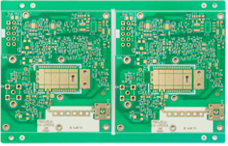The flexible circuit board is a highly reliable and excellent flexible printed circuit board made of polyimide or polyester film as the base material. Referred to as soft board or FPC, it is characterized by light weight, small size, folding and bending; not only has good insulation performance, sealing performance, radiation resistance, high temperature resistance, etc., but also has good solderability, assembly processability, High-speed transmission electrical characteristics.
Due to the evolution of process design, high-density SMT processing can be performed on FPC at present. However, due to the soft characteristics of FPC itself, the reliability of chip IC and components is lower than that of PCB to a certain extent. Therefore, the on-board components are Dispensing reinforcement has become the first choice of most manufacturers.

More and more FPC soft board factories received orders from customers for dispensing and reinforcement, and they didn't know what to do at the beginning. In fact, this piece is not that complicated. First of all, choose a dispenser. The foreign brands of dispensers include Musashi, EFD, Feishen, Asymtek, CAMALOT, Sejong, South Korea Alpa, IEI, LILE. Domestic brands include AXXON axis, Dongguan Anda, Shenzhen Huahaida and other brands. Dispensing machines include controller type dispensers, desktop dispensers, semi-automatic dispensers, automatic dispensers and other types. The prices of these models vary greatly depending on the degree of automation. Each factory selects the appropriate model according to its own production capacity, personnel and order status.
After choosing the glue machine, it is time to choose the right glue. This piece of glue generally uses single-component epoxy resin glue. The epoxy resin itself is a fluid liquid, and it does not cure itself, so a curing agent needs to be added. The curing agent will not undergo cross-linking reaction with epoxy resin at room temperature. Cross-linking reaction will occur only when heated to a certain temperature. At the same time, a certain amount of heat is released to promote the curing of glue. After curing, the epoxy resin glue has high bonding strength, long-term high temperature resistance of 200-250 degree Celsius, instant resistance (400 degree Celsius), impact resistance, vibration resistance; cured product has good acid and alkali resistance, moisture, water, oil and dust resistance. Good, resistance to damp heat and atmospheric aging; the cured product has good electrical and physical properties such as insulation, compression resistance, and high bonding strength.
This glue should be stored at a low temperature, and it should be warmed up for about 2 hours before use. Before bonding, clean the bonded parts with a cleaning agent to enhance the bonding strength.
The most common problems inFPC IC reinforcement dispensing are bubbles and air pockets. Here is an explanation of the reasons and solutions.
1. There are two ways to defoam the epoxy resin, one is autonomous defoaming (through the action of defoaming agent), the other is passive defoaming (through external forces such as grinding, vacuuming, etc.), generally a combination of the two methods use.
2. There are two types of bubbles: one type of "needle" (lighter, such as the size of a sewing needle), and one type of "air pit" (about 1mm in size, very deep, and some can even see the substrate or gold thread), Generally there is only one air pit per glue point);